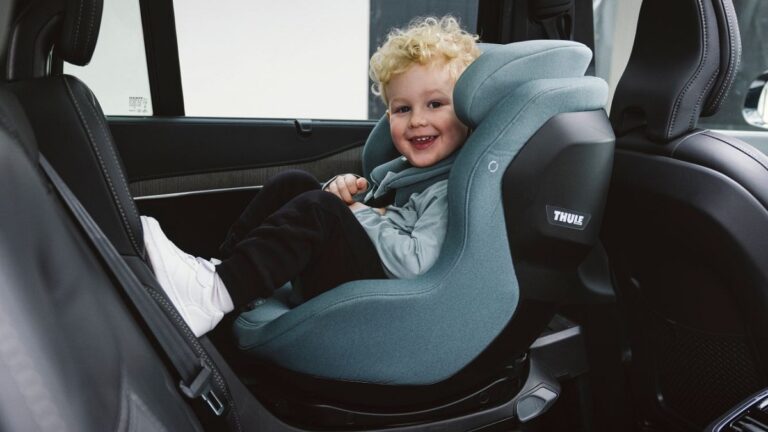Keeping your child safe in the car is a top priority, and knowing how long to use a rear-facing car seat plays a crucial role. Rear-facing seats provide the best protection for your little one’s head neck and spine during a crash. But how long should you keep your child rear-facing?
Many parents wonder when it’s safe to switch to a forward-facing seat. The answer depends on your child’s age weight and height as well as the specific car seat’s guidelines. Understanding these factors helps you make informed decisions that maximize safety without rushing the transition.
Importance of Rear Facing Car Seats
Rear-facing car seats reduce the risk of injury by supporting your child’s head, neck, and spine in a crash. Younger children have proportionally larger heads and weaker neck muscles, so facing the rear absorbs impact forces more evenly. Studies from safety organizations like the American Academy of Pediatrics confirm that rear-facing seats cut serious injury risk by up to 75% compared to forward-facing seats.
You gain extra protection when keeping your child rear-facing until they reach the maximum weight or height limit specified by the car seat manufacturer. Transitioning too early exposes your child to greater injury risks, especially in frontal collisions. Remaining rear-facing for as long as possible provides the strongest safeguard during critical development stages.
Using rear-facing seats correctly also ensures your child fits securely and comfortably, reducing distractions while driving. Proper installation and harness adjustment enhance the overall effectiveness of the seat. Following updated safety guidelines aligns your choices with the latest crash test data and regulatory recommendations.
Recommended Duration for Rear Facing Car Seats
Rear-facing car seats protect your child best when used for the longest duration possible within the seat’s limits. Knowing when to switch depends mainly on age, weight, and safety considerations.
Age and Weight Guidelines
Keep your child rear-facing until they reach at least 2 years old. Many safety experts recommend extending this up to 4 years, if the car seat supports it. Check the car seat label for maximum weight and height limits—common limits range from 40 to 50 pounds and 40 inches tall. Always use the rear-facing seat according to those specifications, regardless of your child’s age.
Safety Benefits of Extended Rear Facing
Rear-facing seats support your child’s head, neck, and spine in crashes, reducing injury risk by up to 75% compared to forward-facing seats. Extended rear-facing usage allows those vulnerable areas to absorb crash forces better in frontal collisions, which are the most common and severe. Staying rear-facing longer increases overall protection during every car ride, making it the safest choice until your child outgrows the seat’s rear-facing limits.
Transitioning to Forward Facing Seats
You must recognize when your child is ready to move from a rear-facing seat to a forward-facing one. Making the transition at the right time ensures continued safety without compromising comfort or support.
Signs Your Child Is Ready to Transition
Look for your child’s height and weight reaching the car seat manufacturer’s maximum limits for rear-facing use, typically between 40 to 50 pounds and up to 40 inches tall. Notice if your child’s head extends beyond the top of the seat or if their legs become uncomfortably bent, although leg comfort alone doesn’t necessitate transition. Confirm your child is at least 2 years old; many experts recommend keeping them rear-facing until 4 years old whenever possible. Check the car seat’s instruction manual for specific recommendations on height and weight limits to guide your timing confidently.
Risks of Switching Too Early
Switching to a forward-facing seat before your child meets the recommended size and age increases the risk of serious injuries in frontal collisions, which occur most frequently and with high impact. Forward-facing seats provide less support for a child’s head, neck, and spine in a crash, making early transition dangerous. Premature switching exposes vulnerable areas to greater crash forces as the child’s skeletal structures are still developing. Avoid compromising your child’s safety by adhering strictly to the rear-facing limits stated by the car seat manufacturer.
Tips for Prolonged Rear Facing Comfort
Maintain your child’s comfort during extended rear-facing rides by consistently checking their positioning. Adjust the harness straps to fit snugly without restricting movement, ensuring they sit upright to support proper breathing and spinal alignment. Use a head support pillow designed for rear-facing seats if your child tends to lean forward, preventing neck strain.
Limit bulky clothing, like winter coats, which reduce harness effectiveness and may cause discomfort. Instead, layer thin clothing and cover your child with blankets after securing the harness.
Plan frequent breaks on long trips to let your child stretch and reposition, which helps prevent stiffness and restlessness. Offer toys or snacks reachable within the seat to keep your child engaged safely.
Ensure your car seat is installed at the correct recline angle specified by the manufacturer, typically between 30 to 45 degrees, to promote comfort and safety. Using a wheel well or base recline adjustment can aid with maintaining the proper angle, especially for newborns and younger toddlers.
Conclusion
Keeping your child rear-facing as long as possible is one of the best ways to protect them during car rides. By following the car seat manufacturer’s limits and prioritizing safety over convenience, you’re giving your child the strongest defense against injury.
Remember that every child grows differently, so stay attentive to their size and comfort while ensuring the seat is installed correctly. Your careful choices now can make a big difference in your child’s safety on the road.

